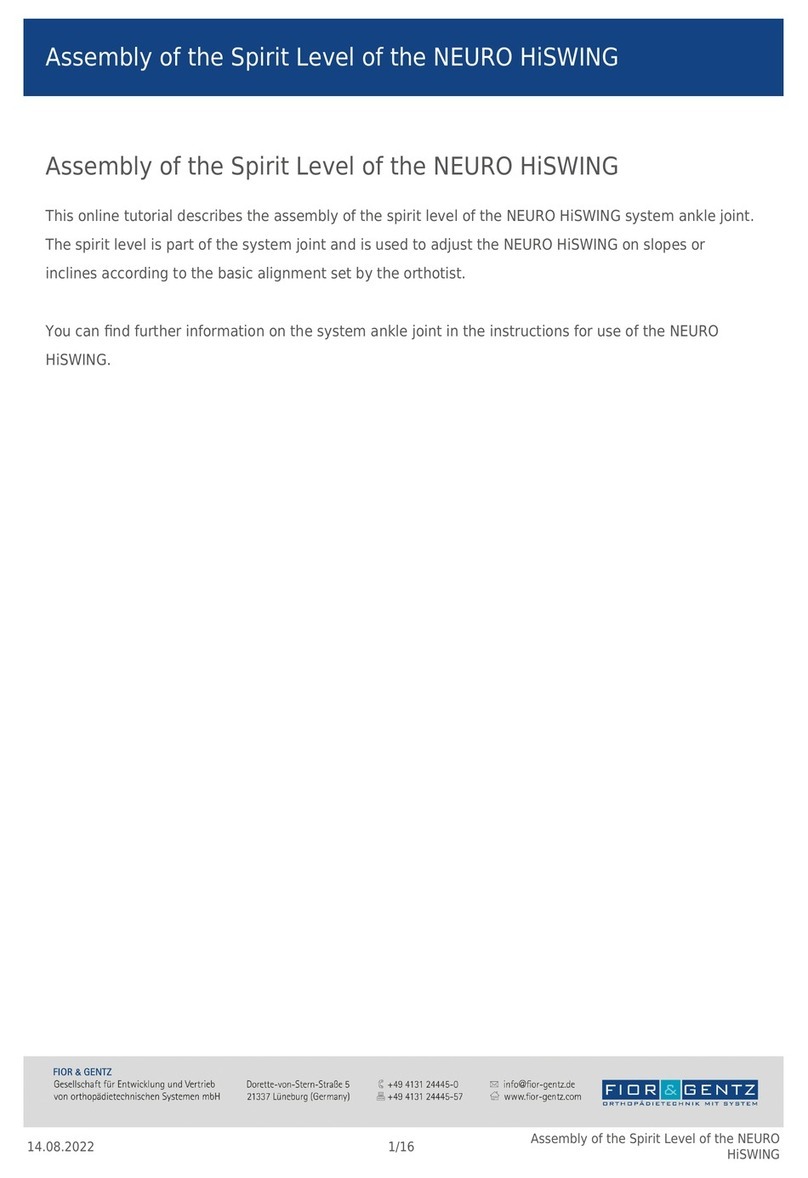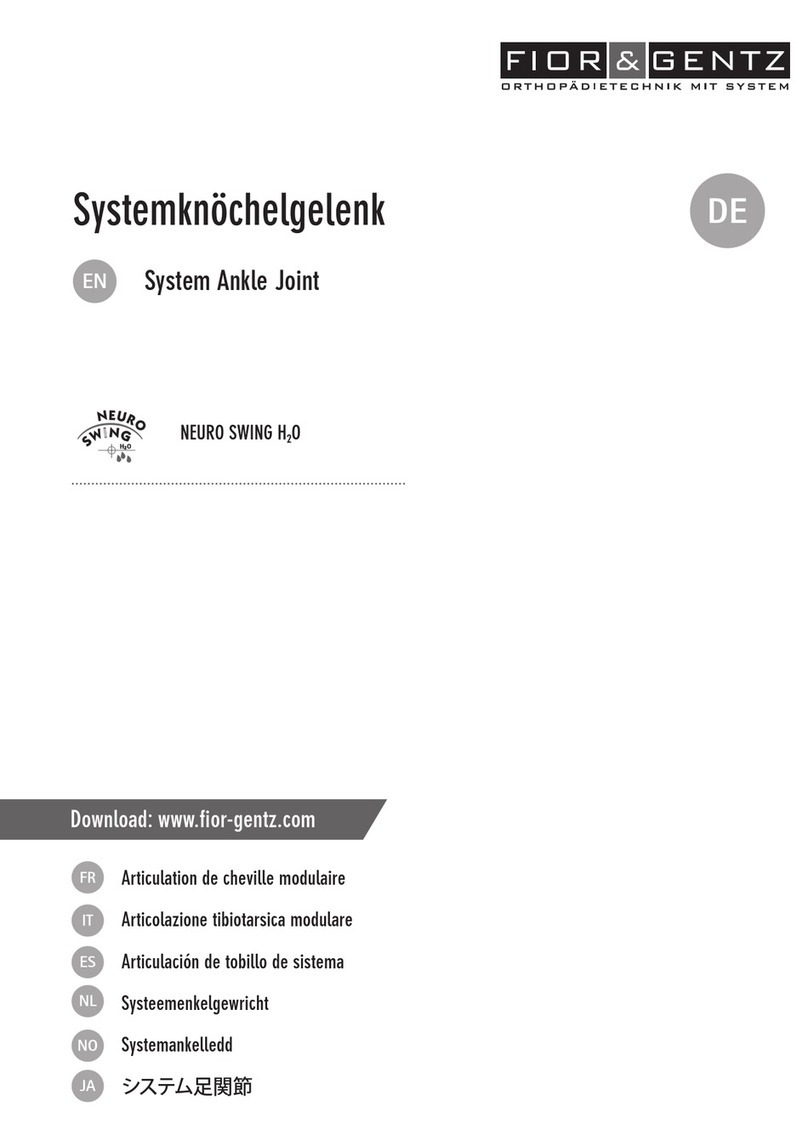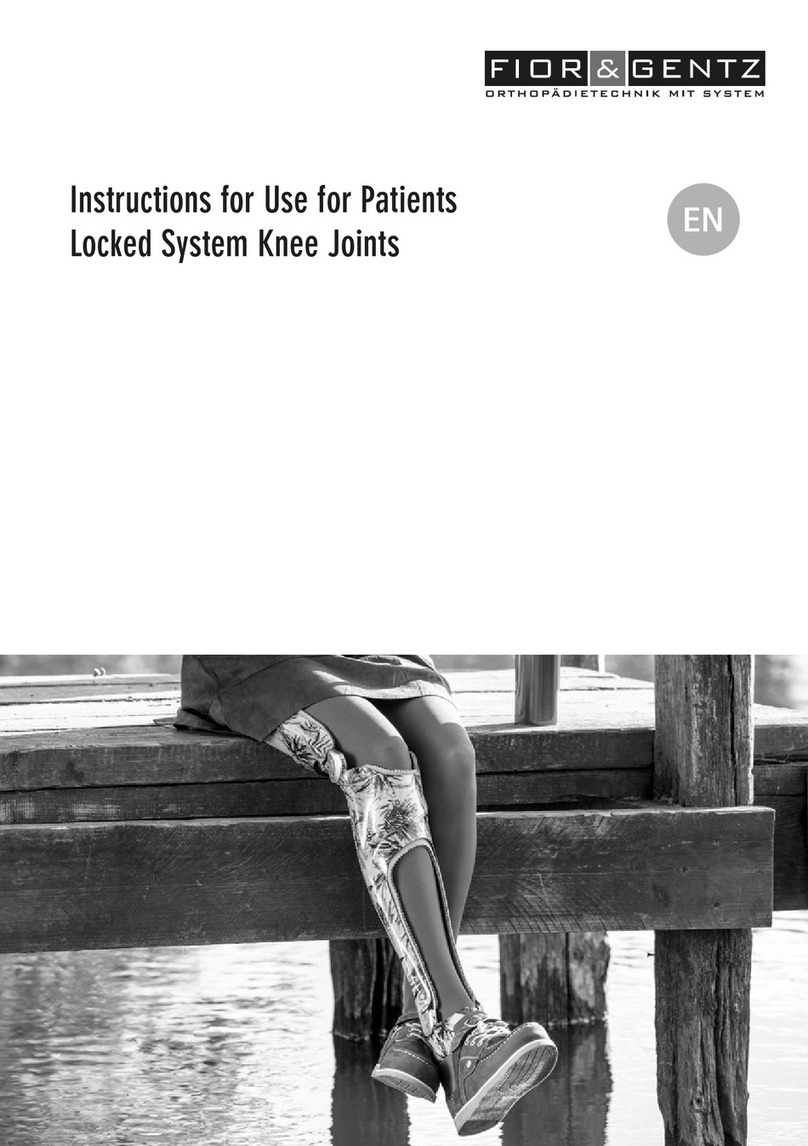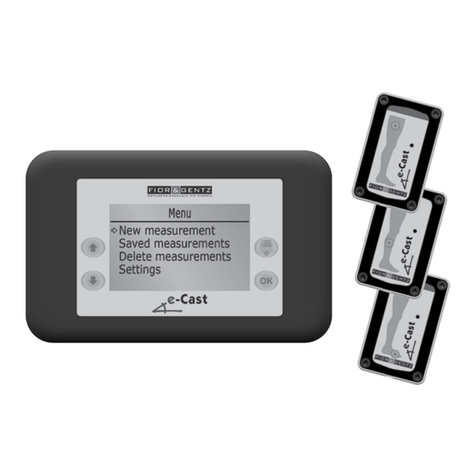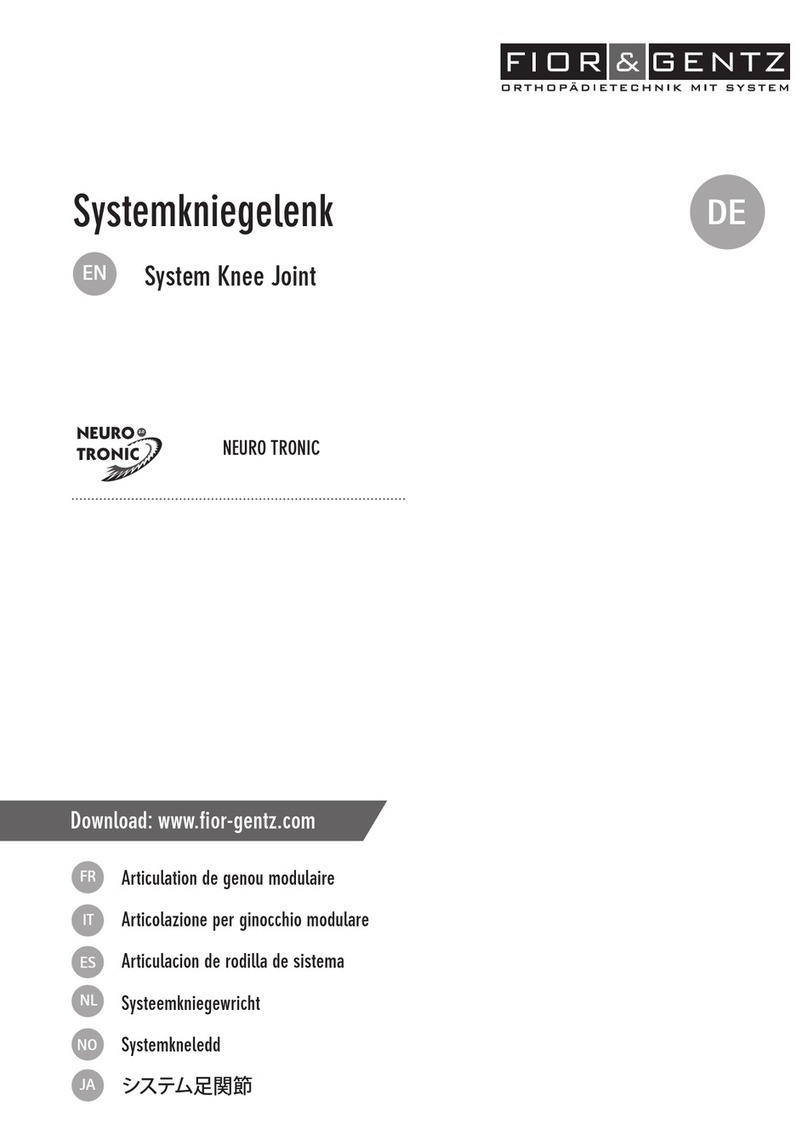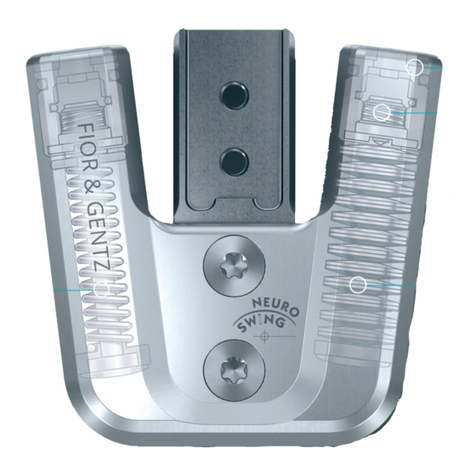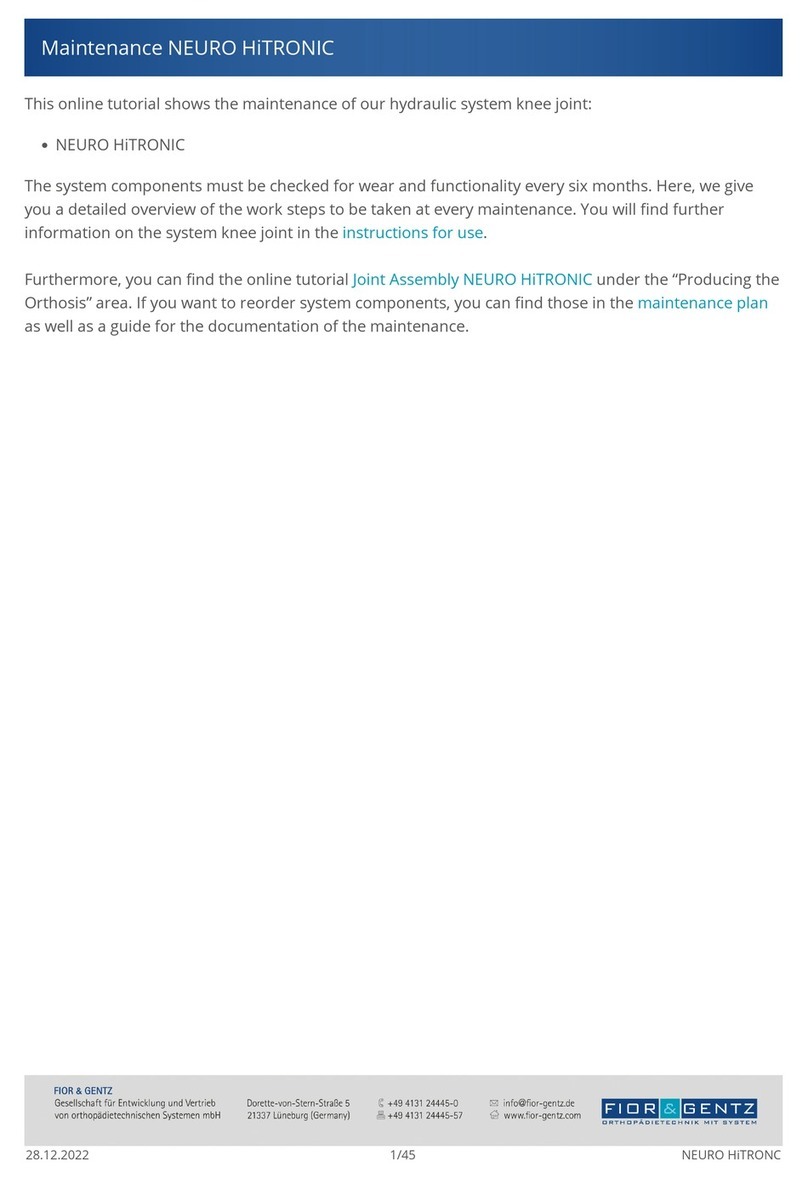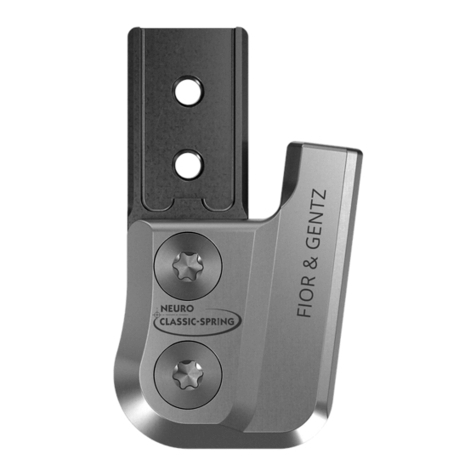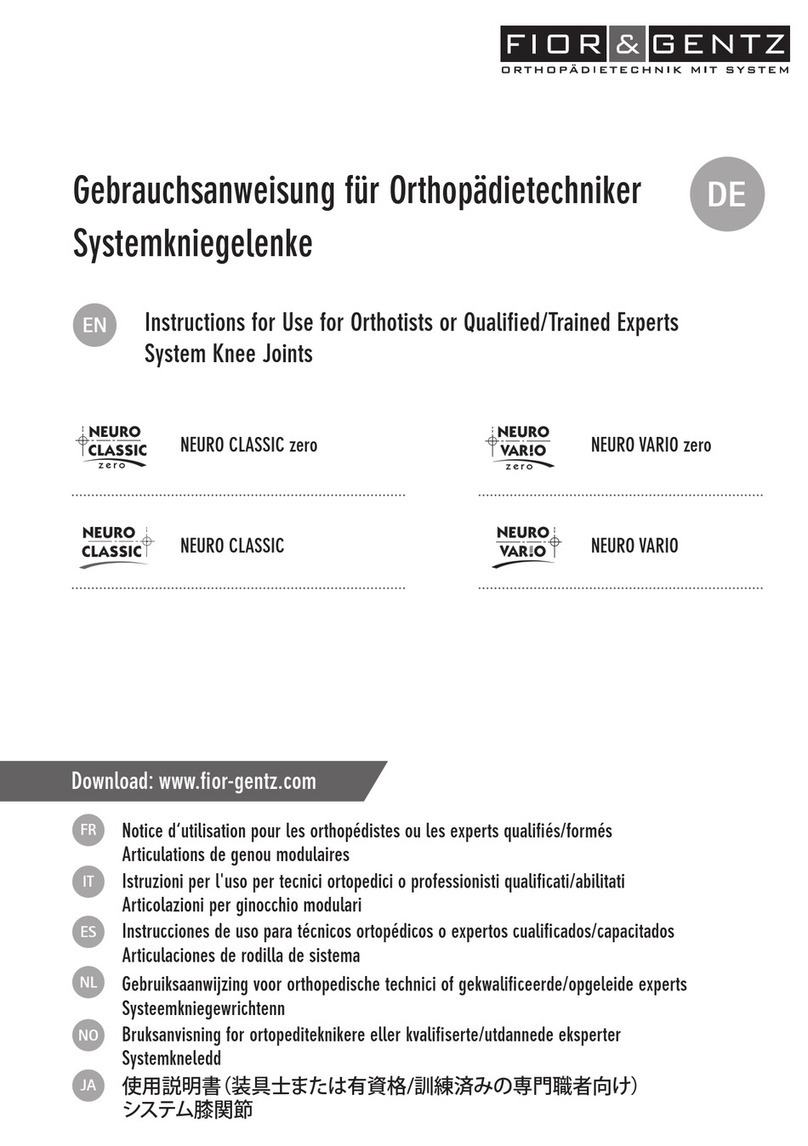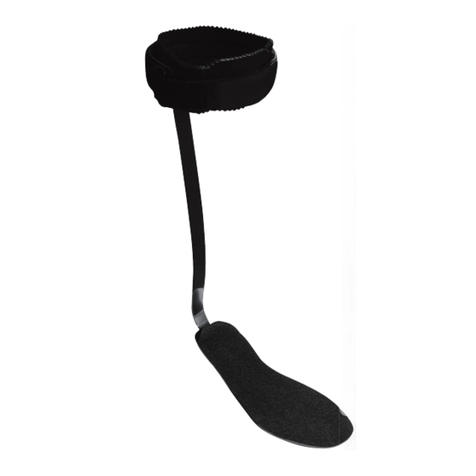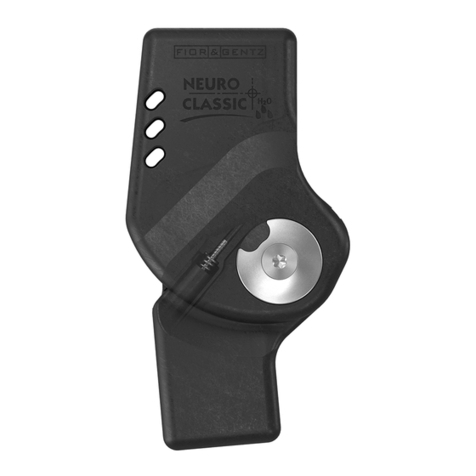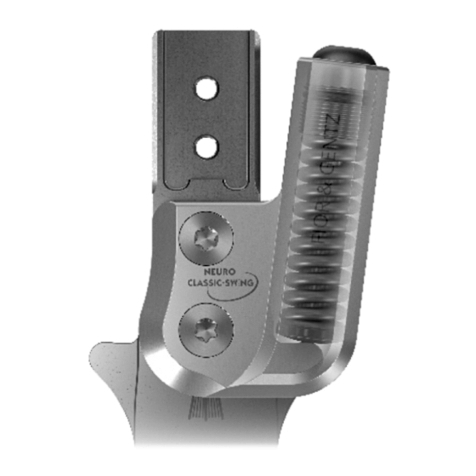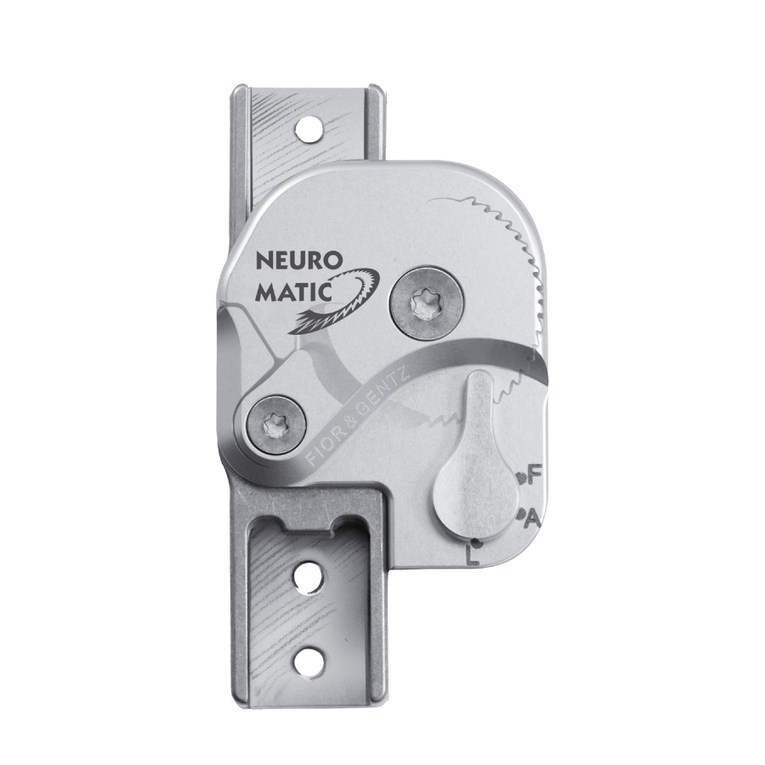
14
5.5 The Proper Shoe
The orthotist adjusts your orthosis when you try it on and do your first steps. Since you have to get used to your
new orthosis, the adjusted orthosis should be regularly checked in the first weeks and, if necessary, newly adapted
to your need for safety. The orthosis is adjusted to the pair of shoes with which you start walking with your
orthosis. If you want to wear other shoes, it must be ensured that the orthosis is also adjusted to these shoes.
5.6 Gait Re-education
We recommend making use of a physiotherapeutic gait re-education. In gait re-education, the following should
be specially trained:
-a sufficient step length, as this is decisive for the system knee joint working properly;
-walking upright, with the upper body slightly bent forward;
-to apply as little body weight as possible on orthopaedic devices such as canes, parallel bars or walkers,
otherwise the lock function is not triggered.
With gait re-education, you become more secure in using your orthosis, your gait pattern improves and you get
used to your orthosis quite soon. This is particularly important when a locked orthosis has been used before for
many years.
Be extremely careful when managing stairs, going on uneven surfaces or uphill/downhill. If you do not feel secure
in using your orthosis in Auto mode yet, we recommend selecting Lock mode (see paragraph 5.2). Regularly
report to your orthotist your experiences with the orthosis during the first weeks. This is the only way you can
get specific advice or help.
6. Cleaning the Orthosis
Clean the orthosis regularly. Make sure that you do not immerse the orthosis in water or other liquids since this
can damage the system components and therefore influence the joint function negatively.
Clean the orthosis with a damp cloth. Leave out the area around the system joint and clean it only superficially
with a dry cloth. Remove visible dust and lint from the mechanics by using tweezers. Check the orthosis in a
straight and flexed position.
7. Maintenance of the Orthosis
Experience shows that children and people with cognitive impairments are often not able to notice and pass on
information about changes on the orthosis and especially on the system joint. We would like to point out that
you as parents or care team have to check the orthosis or more specifically the system joint regularly for signs
of wear such as play in the system joint or unusual noises. In case of changes, immediately get in touch with
your orthotist, regardless of the next follow-up appointment.
Furthermore, we would like to point out that you must not carry out any maintenance or other adjustments to
your orthosis by yourself. This might cause injuries and damage the orthosis. If adjustments or repairs of the
orthosis become necessary, always contact your orthotist.
8. Disposal of the Orthosis
If you no longer need the orthosis, please return it to your orthotist. The product must not
be disposed of with the residual waste (fig.9).
fig. 9
The more physiological the gait characteristics become, the better the orthosis can support you.

